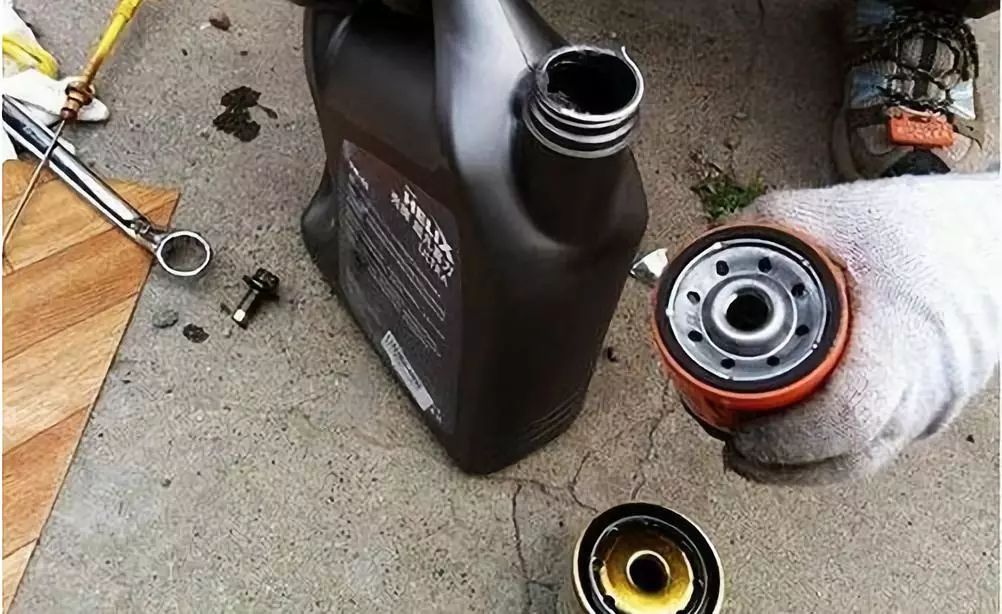The engine is the heart of the construction machinery, maintaining the operation of the entire machine. During the engine operation, metal grinding debris, dust, oxidized carbon deposits and colloidal deposits at high temperatures, water, etc. are constantly mixed into the lubricating oil. The function of the oil filter is to filter out the impurities, glue and moisture in the oil, and to deliver clean oil to each lubrication part, prolong its service life, and play a decisive role in the construction machinery!
Then, should the oil filter be replaced with oil first?
First of all, it is recommended that you must use the filter cartridges produced by regular manufacturers.
The oil filter has a simple structure, and the internal filter paper and some important parts are also difficult to distinguish from the appearance. Therefore, all kinds of cottage filters are endless, and the price is low. Therefore, some users go to buy fake and inferior products in order to save money. I remind you that these filter elements from irregular channels not only have a good protection for your love machine, but even Causes certain damage, once the inside of the machine is mixed with impurities, it will not be worth the loss.
Oil filter replacement steps:
The first step: discharge waste engine oil
 First discharge the waste engine oil in the fuel tank, place the old oil container under the oil pan, open the oil drain bolt, and discharge the waste oil. When draining the oil, try to let the oil drip for a while, and ensure that the waste oil is discharged clean. (When the oil is used, it will produce a lot of impurities. If it is not clean when it is replaced, it will easily block the oil circuit, resulting in poor oil supply and structural wear.
First discharge the waste engine oil in the fuel tank, place the old oil container under the oil pan, open the oil drain bolt, and discharge the waste oil. When draining the oil, try to let the oil drip for a while, and ensure that the waste oil is discharged clean. (When the oil is used, it will produce a lot of impurities. If it is not clean when it is replaced, it will easily block the oil circuit, resulting in poor oil supply and structural wear.
Step 2: Remove the old oil filter
Move the old oil container under the filter and remove the old filter. Be careful not to let the waste oil stain the inside of the machine.
The third step: preparation before the oil filter installation
This step is to tell everyone to replace the new filter with no need to first fill the filter with oil.
There are two ways to install the oil filter. The common one is vertical installation, and there are many small digging machines that are installed horizontally. The installation method is different, so filling the oil is also divided into two cases:
First of all, the vertically installed oil filter, which is connected to the oil pump through a pipeline, is generally recommended to replace the filter, go to the filter to fill the oil. If the new machine is not filled with oil, air resistance will be generated inside the new filter element. When the vehicle is in the vehicle, the internal lubrication of the machine will be short-lived for a short period of time, which will cause structural parts to wear. The advantage of the vertical installation is that the filter element has a better seal and there is very little oil leakage.
In addition, the horizontally mounted oil filter element is directly connected to the oil pump through the oil pipeline. This design does not generate air resistance when the oil is filled into the oil tank. The filter element does not need to be lifted into the inside before installation. Filling the oil, the oil filter can be directly filled with oil while injecting new oil into the sump.
Step 4: Install a new oil filter
Check the oil outlet of the oil filter installation position to clean the dirt and residual waste oil. Before installation, first put a sealing ring on the outlet, and then slowly screw the new filter. The filter is not too tight. Generally, it is tightened by hand and then screwed with a wrench. 3/4 The circle is fine. When installing a new filter element, do not use excessive force on the wrench, otherwise it will easily damage the seal ring inside the filter element, resulting in poor sealing effect and no filtering effect!
Step 5: Add new oil to the oil tank
Finally, inject new oil into the oil tank and, if necessary, use a funnel to prevent the oil from falling outside the engine. After the filling is completed, check the lower part of the engine for leaks.
If there is no leak, check the dipstick and see if the oil is added to the line. It is recommended to add it to the line. During the daily work, everyone should also check the dipstick regularly. If the oil is less than the lower line, it should be replenished in time.
A small oil filter looks unremarkable, but it has an irreplaceable position in construction machinery. If the oil in the engine is not filtered through the filter core and directly enters the lubricating oil circuit, the impurities contained in the oil will be brought into the friction surface of the metal to accelerate the wear of the parts and reduce the service life of the engine. Changing the oil filter is extremely simple, but the correct method of operation can extend the life of the machine.
Post time: Jun-14-2019





